Beauty
How Hair Transplants for Men Differ from Female Procedures
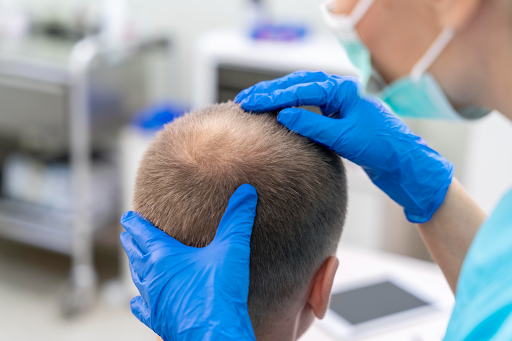
Hair transplant surgery is a widely accepted solution for restoring lost hair in both men and women. However, many are unaware that hair restoration techniques are not a one-size-fits-all procedure. While both genders undergo transplants using similar tools and surgical principles, the strategies, design considerations, and expected outcomes differ significantly. Understanding these differences is crucial for achieving optimal results.
If you are considering a hair transplant for men or exploring options like eyebrow hair transplant, this guide will help you understand the distinctions in surgical planning, treatment outcomes, and patient expectations based on gender.
Understanding the Basics of Hair Transplant Surgery
Hair transplantation involves relocating healthy hair follicles from a donor area—typically the back or sides of the scalp—to areas affected by thinning or balding. Two primary methods are commonly used:
- FUE (Follicular Unit Extraction): Involves removing individual hair follicles for transplantation.
- FUT (Follicular Unit Transplantation): Involves removing a strip of skin with hair follicles, which is then dissected into grafts.
Both methods are effective and can be used in both male and female patients, though FUE is often preferred for those who wear their hair short.
Key Differences in Hair Loss Patterns
Male Pattern Baldness
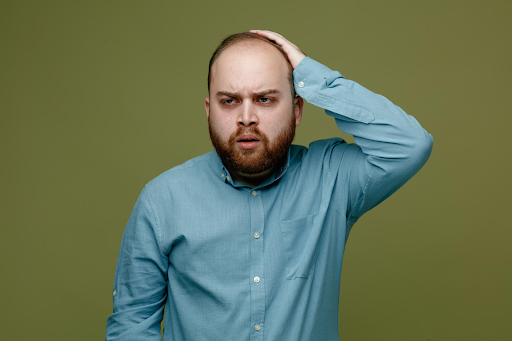
Men typically experience androgenetic alopecia (commonly known as male pattern baldness), which follows a predictable pattern:
- Receding hairline, especially at the temples
- Thinning at the crown
- Eventual progression to baldness on the top of the scalp
Because the sides and back of the scalp remain unaffected, these areas provide a reliable donor source for transplant procedures. For this reason, a hair transplant for men often focuses on rebuilding the frontal hairline and adding density to the crown.
Female Pattern Hair Loss
Women, on the other hand, tend to experience diffuse thinning across the entire scalp rather than receding hairlines or bald spots. This presents a challenge, as the donor area may also be affected by thinning, reducing the number of viable grafts available for transplantation. For women, the goal is often to improve overall density rather than reconstruct a hairline.
Aesthetic Design Considerations
Hair transplant surgeons approach design very differently for male and female patients.
Hairline Shape and Position
- Men: The male hairline is typically higher, with a more “M-shaped” or angular design that mimics a natural masculine appearance. Surgeons take into account future hair loss to ensure the transplanted area blends naturally as ageing progresses.
- Women: Female hairlines are usually lower and more rounded. Surgeons aim to preserve this natural shape while increasing thickness across the top of the head.
Eyebrow Hair Transplant
Eyebrow transplants are another key area where gender-specific differences matter. While both men and women seek eyebrow hair transplant procedures, women usually desire a softer, more arched brow, whereas men prefer a flatter, fuller brow. The direction, angle, and density of each graft are customised to suit these aesthetic goals.
Surgical Approach
Shaving the Donor Area
One major difference is the preparation of the donor site:
- Men: Typically shave the donor area or even the entire head before surgery. This facilitates easier extraction and implantation of follicles.
- Women: Often prefer not to shave their head. Surgeons usually shave a small section underneath longer hair so it can be hidden post-operatively.
Graft Placement and Density
- Men: Generally require more grafts, especially if the transplant covers the crown and temples. The priority is often restoring a defined hairline and filling bald spots.
- Women: Require grafts to be placed between existing hairs to improve volume and density without creating abrupt changes. The challenge lies in not damaging existing hair during the procedure.
Recovery and Post-Op Considerations
Recovery timelines are similar, but the visual impact during healing can vary.
- Men often have shorter hair and are less concerned about visible redness or scabbing in the immediate post-op period. They may resume public life more quickly.
- Women may need to be more discreet during healing due to longer hair concealing healing areas. They also often return to styling and colouring their hair sooner, so post-op care must account for these factors.
Expectations and Psychological Factors
Hair restoration surgery can significantly boost self-esteem, but expectations must be realistic.
- Men may seek a dramatic transformation and expect a fuller head of hair. Proper counselling is necessary to ensure they understand the limitations of their donor supply and the gradual nature of results.
- Women, while often more concerned with overall density and volume, may be more emotionally affected by hair loss due to societal pressures. Compassionate consultation and follow-up care are crucial.
Eyebrow Hair Transplant as an Add-On Procedure
Eyebrow transplants are growing in popularity among both genders, especially those who have experienced thinning due to over-plucking, ageing, or medical conditions. The procedure involves taking single hair follicles—usually from the nape of the neck or behind the ears—and carefully implanting them into the brow area.
This is a highly precise treatment and requires an expert touch to ensure hairs grow in the correct direction and mimic natural brow hair. Whether as a standalone procedure or in conjunction with a hair transplant for men, an eyebrow hair transplant can help complete a youthful, balanced facial appearance.
Conclusion
While hair transplant techniques such as FUE and FUT are technically similar for both men and women, the approach, design, and goals differ greatly. A hair transplant for men often centres on hairline reconstruction and density at the crown, whereas women usually seek improved volume without a visible change in hairline shape. Additionally, eyebrow hair transplant is a growing area of cosmetic interest for clients wanting precise and natural-looking results.
Understanding these differences allows patients to set realistic expectations and work closely with experienced hair restoration specialists. Choosing the right clinic that understands gender-specific needs is key to achieving natural and long-lasting results.
If you’re considering either procedure, consult a qualified surgeon to assess your suitability and begin your personalised treatment plan.
Beauty
Primerem: Primer for Deep Hydration & Glowing Skin

Are you tired of dull, dehydrated skin that lacks that coveted glow? Meet Primerem—the ultimate skincare solution designed to transform your complexion. If you’ve been searching for a product that delivers deep hydration and leaves your skin radiating with freshness, look no further. This innovative primer is more than just a base for makeup; it’s the secret weapon in your skincare arsenal that hydrates from within.
Imagine stepping out each day with effortlessly luminous skin, feeling confident and ready to take on the world. Whether you’re prepping for an event or simply want to enhance your daily routine, Primerem promises to be the key ingredient in achieving radiant results. Let’s dive deeper into what makes this product stand out and how it can elevate your skincare game!
What is Primerem?
Primerem is a cutting-edge skincare primer specifically formulated to deliver intense hydration and promote a healthy, glowing complexion. Unlike traditional primers that primarily focus on makeup application, Primerem goes beyond by nourishing the skin while creating a smooth base.
This innovative product blends seamlessly into your skincare routine. It acts as both a hydrating serum and an effective primer, making it versatile for various skin types.
Packed with powerful ingredients, Primerem targets dryness and uneven texture. Its lightweight formula absorbs quickly, leaving no greasy residue behind—just pure moisture that revitalizes tired skin.
Whether you’re heading out for a busy day or preparing for an evening event, incorporating Primerem can enhance your natural beauty effortlessly. This game-changing product aims not only to improve makeup longevity but also to elevate your overall skincare experience.
Benefits of Primerem for the Skin
Primerem offers a multitude of benefits for your skin, making it an essential addition to your skincare routine. Its deep hydration properties help quench thirsty skin, leaving it feeling plump and rejuvenated.
This primer also creates a smooth canvas for makeup application. By minimizing the appearance of pores and fine lines, Primerem allows foundation to glide on effortlessly.
Additionally, its antioxidant-rich formula protects against environmental stressors. This helps combat signs of aging while promoting a youthful glow.
Using Primerem can enhance your natural radiance. It brings out the best in your complexion, ensuring you look fresh throughout the day.
Moreover, it suits various skin types. Whether you have oily or dry skin, Primerem adapts to meet individual needs without causing irritation or breakouts.
Key Ingredients and their Functions
Primerem is crafted with an impressive blend of key ingredients that work harmoniously to deliver deep hydration and a radiant glow.
Hyaluronic acid stands out for its remarkable ability to retain moisture. This superstar ingredient can hold up to 1,000 times its weight in water, providing your skin with lasting hydration.
Next, we have Vitamin C, known for its brightening properties. It helps to even out skin tone while combating free radicals that cause premature aging.
Another vital component is glycerin. This natural humectant draws moisture from the environment into the skin, ensuring it remains plump and supple throughout the day.
Aloe vera offers soothing benefits. Its anti-inflammatory properties calm irritated skin while delivering essential nutrients for healthy cell regeneration.
Together, these ingredients create a powerhouse formula designed to transform your skincare routine and enhance your natural beauty.
How to Use Primerem for Optimal Results
To achieve the best results with Primerem, start by cleansing your face thoroughly. This step ensures that any dirt or oils are removed, allowing for better absorption of the product.
Next, apply a small amount of Primerem to your fingertips. A little goes a long way; you don’t need to slather it on. Gently massage it into your skin using upward strokes.
Focus on areas that tend to be drier or where makeup often fades first. Allow the primer to settle for a minute before applying foundation or other skincare products.
For an added hydration boost, try layering Primerem under your moisturizer at night. This enhances the skin’s moisture retention and gives you that dewy glow by morning.
Remember, consistency is key! Regular use will yield noticeable improvements in texture and overall radiance.
Customer Reviews and Testimonials
Customers rave about their experiences with Primerem. Many users have noted how instantly their skin feels hydrated and refreshed upon application.
One happy customer mentioned, “My makeup glides on smoothly now, and I can actually see a glow!” This transformation has made them feel more confident in their appearance.
Others appreciate the lightweight texture that doesn’t clog pores. They highlight how it provides all-day moisture without feeling greasy.
Testimonials also reflect on the long-term benefits of using Primerem regularly. Several users report a noticeable improvement in skin texture after just weeks of use.
The positive feedback continues to pour in, showcasing not just satisfaction but genuine enthusiasm for this product’s ability to enhance natural beauty.
Where to Purchase Primerem
Finding the perfect place to purchase Primerem is easy. This sought-after product is available at various online retailers, ensuring convenience for all users.
You can visit the official Primerem website for direct purchases. They often provide exclusive offers and discounts that you won’t find elsewhere. Plus, shopping from their site guarantees authenticity.
Major e-commerce platforms like Amazon also stock Primerem. This option allows you to read customer reviews and compare prices quickly.
Local beauty supply stores may carry it as well, giving you a chance to explore other skincare products while you’re there.
Before making your choice, check for shipping options and return policies. You want a hassle-free experience when investing in your skin’s health.
Conclusion: Achieving Radiant Skin with Primerem
Achieving radiant skin is a journey, and Primerem can be an essential companion on that path. With its unique formulation designed to deeply hydrate and enhance your skin’s natural glow, it caters to various skin types and concerns.
The benefits of using Primerem are plentiful. It not only improves hydration levels but also helps create a smooth canvas for makeup application. The blend of key ingredients works synergistically to nourish the skin while promoting elasticity and suppleness.
Using Primerem is straightforward. Incorporating it into your daily routine can yield noticeable results over time, enhancing both the appearance and texture of your skin.
Customer feedback consistently highlights the effectiveness of this primer in transforming their skincare routines. Many users rave about how their complexions appear more luminous after just a few applications.
For those interested in experiencing these benefits firsthand, purchasing Primerem is easy through various online platforms or select retail stores.
Radiant, glowing skin is within reach when you make Primerem part of your beauty regimen. Your complexion deserves this level of care—embrace it today!
Beauty
Electrolysis Hair Removal Explained: 10 Key Insights
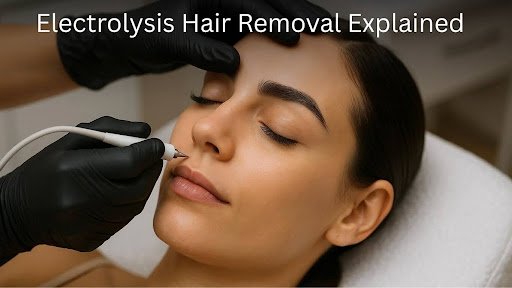
If you’ve ever wondered whether there’s a truly permanent way to remove unwanted hair, electrolysis is one of the rare options that delivers. It’s a method that treats the hair at its root and offers long-term results that many other techniques cannot match.
Electrolysis hair removal is a permanent method that uses a fine probe and a small electric current to destroy hair growth cells within each follicle.
It works on all hair colors and skin types, unlike laser treatments that rely on pigment. Once a follicle is treated, the hair cannot regrow. It’s a safe, precise, and FDA-approved solution for lasting hair removal.
In this article, I’ll walk you through how electrolysis actually works, where it can be used, what to expect before and after a session, how many treatments you might need, and how it compares with other hair removal methods.
Electrolysis Hair Removal Explained: 10 Key Insights
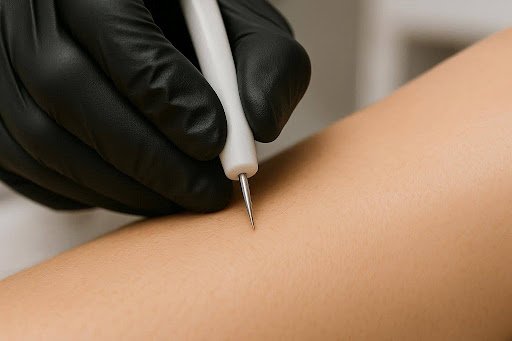
Electrolysis hair removal is based on the simple principle of destroying the hair growth cells within each follicle so that they can no longer produce hair. It’s a meticulous, targeted treatment performed one hair at a time, offering precision and long-term results.
Here’s how the process works:
- A trained electrologist uses a fine, sterile probe that’s about the width of a hair strand. This probe is gently inserted into the natural opening of the hair follicle, not the skin, so it’s virtually painless when done correctly.
- A small electrical current is then delivered through the probe to the base of the follicle, where the growth cells are located.
- This current destroys or weakens the follicle’s ability to grow new hair. The treated hair is then carefully removed with sterilised tweezers.
There are three main electrolysis methods used in clinics:
- Galvanic (Direct Current): Uses a low-level electric current that causes a chemical reaction inside the follicle. It produces sodium hydroxide, which gradually destroys the hair growth cells. This method is slower but extremely thorough, ideal for coarse or stubborn hair.
- Thermolysis (High-Frequency Current): Uses short bursts of radio frequency to generate heat, which cauterises the follicle tissue in just a fraction of a second. It’s faster and often used for smaller areas like the upper lip or chin.
- Blend Method: Combines both galvanic and thermolysis techniques, delivering the chemical and heat effects simultaneously. This method is highly effective for a wide range of hair types and skin tones.
The choice of technique depends on your skin type, pain tolerance, and hair texture. A skilled practitioner will select the most suitable method for each client and even switch techniques across areas for optimal results.
Areas Electrolysis Can Treat
Electrolysis is incredibly versatile. Because it doesn’t rely on pigment (unlike laser), it can safely treat any hair colour from white and blonde to dark brown or black and all skin tones, including very fair or deeply pigmented skin.
Common treatment areas include:
- Face: Upper lip, chin, jawline, sideburns, cheeks, eyebrows
- Body: Underarms, arms, legs, chest, back, abdomen
- Intimate areas: Bikini line and Brazilian zones
- Other delicate areas: Fingers, toes, and around the nipples
This flexibility makes electrolysis a great option for people who may not have been good candidates for laser hair removal, such as those with light or grey hair, hormonal hair growth (like PCOS-related), or mixed hair types.
Benefits of Electrolysis Hair Removal
Many people turn to electrolysis after trying other methods like waxing, threading, or laser, and finding that regrowth or incomplete results persist. Here’s why electrolysis stands out:
- Permanent results: Electrolysis destroys the growth cells in the follicle, meaning that once treated, the hair doesn’t return.
- Clinically proven and FDA-approved: Electrolysis is the only FDA-approved method for permanent hair removal, a distinction that even laser treatments do not have.
- Works on all hair and skin types: Because it doesn’t depend on pigment, it’s effective on light, dark, coarse, or fine hairs, including blond, white, and red hair.
- Safe and precise: Modern electrolysis equipment and sterile probes make the treatment safe for almost all skin types, including sensitive areas.
- Excellent for smaller or resistant areas: It’s often used to “finish” areas where laser treatment has left behind lighter or finer hairs.
When performed by an experienced professional, electrolysis offers clean, lasting, and predictable results.
What to Expect During a Session
Here’s roughly what a client might go through:
Preparation:
- The area should be clean and free of makeup, lotions, or creams.
- Avoid waxing, plucking, or threading weeks ahead of treatment, so the follicle remains present.
During treatment:
- The technician inserts the fine probe into one follicle at a time.
- You might feel mild sensations, a heated or stinging feeling as the current is applied.
- The intensity is adjusted to your comfort and your skin’s tolerance.
Session length & frequency:
- Small areas (e.g. upper lip) may take 15-30 minutes.
- Larger zones (legs, back) could take much longer, or even be split across sessions.
- Treatments are spaced out over time so the skin recovers (often weekly or biweekly at first).
Side Effects and Safety
Because electrolysis works at the microscopic level, side effects are usually mild and temporary. Possible reactions include:
- Redness or slight swelling
- Light scabbing or crusting
- Sensitivity or tenderness
To minimize risks:
- Apply gentle aftercare (described below)
- Avoid picking scabs
- Use sun protection
- Follow the technician’s instructions
Electrolysis is generally safe for all skin types when performed by experienced professionals. For particularly sensitive skin or skin conditions, a consultation is always prudent.
How Many Sessions Are Needed?
There’s no one-size-fits-all answer. The number of sessions depends on:
- The size of the treatment area
- Hair density (how many hairs per follicle)
- The hair growth cycle and how many hairs are active
- The type of hair (thicker hair may need more work)
On average, many clients begin to see noticeable hair reduction after 10-20 sessions (especially for facial zones). For larger areas or dense hair, it might take 20-30 or more.
Each session chips away at remaining active follicles until very few remain.
Electrolysis vs. Other Hair Removal Methods
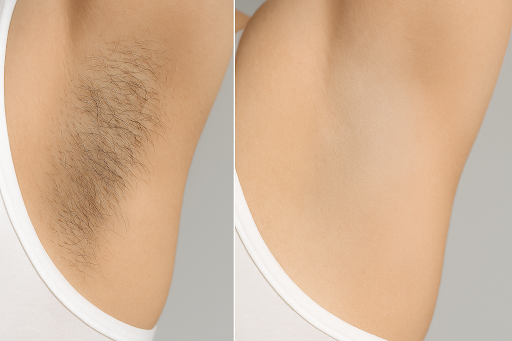
Here are the main distinctions:
Electrolysis vs Laser:
- Laser uses light energy to target pigment; it’s great for dark hair on light skin but less effective on light or fine hair.
- Electrolysis works on all hair colors and textures.
- Only electrolysis is recognised (by the FDA in the U.S.) as a permanent hair removal method.
Why choose electrolysis over others:
- If your hair is light, grey, or fine
- If the laser hasn’t worked well for you
- If you want a truly permanent solution and are willing to invest time
Waxing, threading, and shaving are all temporary. They don’t destroy the root and hair will regrow repeatedly.
Aftercare and Recovery
Proper aftercare helps your skin heal and reduces the risk of complications.
Immediately after treatment:
- Apply a cold compress or soothing gel
- Avoid sun exposure (use SPF)
- Don’t pick or scratch any scabs
- Use very gentle skincare (mild cleansers, avoid active ingredients)
Long-term care:
- Continue to protect your skin from UV
- Avoid harsh treatments or exfoliants in the treated area
- Maintain hydration and gentle skin products
- Return for follow-up sessions as advised
Conclusion
So, does electrolysis work? Yes. When performed by a qualified professional, it’s one of the few proven methods for permanent hair removal. Electrolysis effectively destroys the hair follicle at its root, preventing regrowth for good. It’s safe, versatile, and ideal for all skin tones and hair types, including light or fine hair that laser often misses.
If you’re considering electrolysis hair removal in London, choose a reputable clinic with experienced practitioners who can assess your needs and create a tailored treatment plan. With patience and consistent sessions, you’ll achieve smooth, long-lasting results you can feel confident about.
FAQs
Is electrolysis painful?
You may feel mild heat, tingling, or a slight stinging sensation when the current is applied. Most people say it’s tolerable. The technician can adjust the intensity to your comfort.
Is it safe for sensitive skin?
Yes, when performed correctly. For very sensitive or reactive skin, start with small test areas and notify your technician of any skin conditions. Proper aftercare is key.
How long does each session take?
It depends on the area size. Small areas (upper lip, chin) may take 15–30 minutes. Larger zones (legs, underarms) can take an hour or more. Your technician will estimate based on your hair and skin.
Can electrolysis be done on all body areas?
Yes, it’s suitable for nearly any part of your body, including face, bikini area, underarms, legs, arms, and back.
Beauty
Ready in Minutes: CurlyMe Wear and Go Wigs & 360 Glueless Wigs
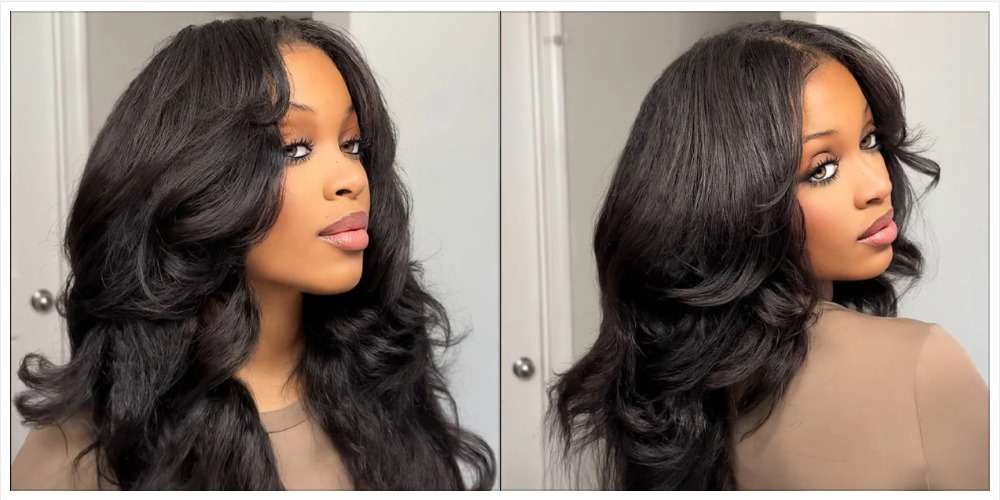
In a world where time is precious and beauty trends move fast, convenience and style are no longer optional—they’re essential. That’s where CurlyMe’s Wear and Go Wigs and 360 Glueless Wigs step in, offering the perfect solution for anyone who wants to look effortlessly flawless without spending hours in front of the mirror. Whether you’re a busy professional, a student on the go, or simply someone who values ease and versatility, these wigs are designed with you in mind.
CurlyMe wear and go wigs: Effortless Beauty in Seconds
As the name suggests, Wear and Go Wigs are designed to be worn instantly—no glue, no lace cutting, no long styling sessions. CurlyMe’s collection of wear and go wigs is perfect for beginners and seasoned wig lovers alike. These units come pre-plucked, pre-styled, and ready to wear straight out of the box.
What sets them apart is their natural look and snug fit. Featuring pre-cut lace and adjustable straps, CurlyMe wear and go wigs blend seamlessly with your hairline and stay secure all day. Whether you’re running errands, heading to work, or stepping out for a casual meet-up, you can throw on your wig and be out the door in minutes.
They’re also incredibly lightweight and breathable, making them comfortable for all-day wear. And because they’re made with 100% human hair, you can still curl, straighten, or restyle them as you wish.
CurlyMe 360 glueless wig: Full Coverage Meets Flexibility
If you’re looking for maximum styling versatility and full head coverage, CurlyMe’s 360 Glueless Wigs are a must-have. These wigs feature a full lace perimeter that allows you to part your hair in any direction—front, back, or sides—while still enjoying the benefits of a glueless, secure fit.
What makes 360 glueless wigs unique is the ability to achieve high ponytails, buns, or updos with ease. The lace runs around the entire hairline and nape, giving you the freedom to style your hair however you like without revealing any wig tracks. And since they’re glueless, there’s no need for adhesives or salon visits to install them.
CurlyMe’s 360 glueless wigs also feature adjustable bands and built-in combs, ensuring a snug and customizable fit that stays put all day long. They’re great for those who want both functionality and a natural-looking hairline without the hassle.
Why Choose CurlyMe?
CurlyMe has built a reputation for quality, affordability, and user-friendly design. All of their wigs are made with 100% virgin human hair, offering durability, softness, and a natural finish. Their wear and go wigs and 360 glueless wigs are crafted to save you time, protect your natural hair, and keep you looking fabulous no matter what your day throws at you.
Plus, CurlyMe offers a variety of textures—straight, body wave, curly, deep wave—and lengths to suit every personality and preference. Whether you prefer a sleek bob or voluminous curls, there’s something for everyone.
The Perfect Combo: Ready-to-Wear Meets Total Versatility
Combining Wear and Go Wigs with 360 Glueless Wigs gives you the best of both worlds: speed and style versatility. On the days when you’re in a rush, a wear and go wig is your best friend. For special occasions or days when you want to switch up your hairstyle completely, the 360 glueless wig has you covered.
Together, they create a complete hair wardrobe that adapts to your life—beautifully and effortlessly.
Final Thoughts
Gone are the days of time-consuming wig installs and messy glues. With CurlyMe’s Wear and Go Wigs and 360 Glueless Wigs, achieving a flawless, salon-quality look has never been easier. These wigs are made for real life—fast, flexible, and fabulous.
So if you’re ready to simplify your routine without compromising on beauty, explore CurlyMe’s collection and discover wigs that are truly ready in minutes.






